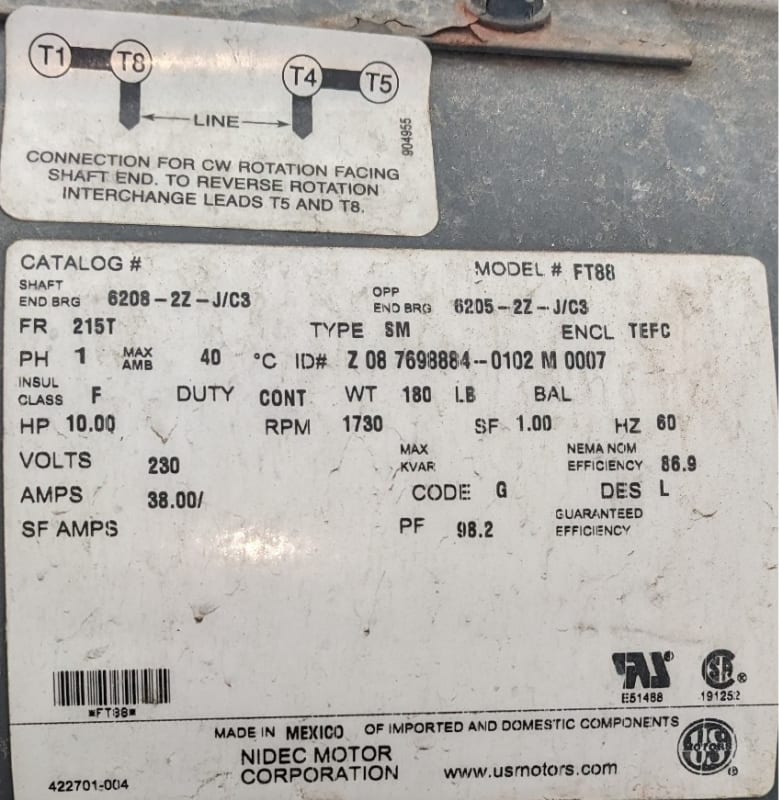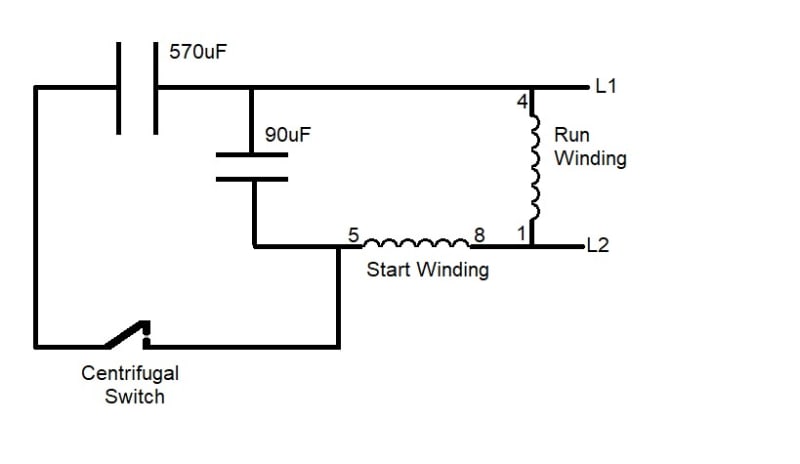My son brought home from his workplace 4 AC capacitors used on the motor of an air compressor.
The air compressor will not spin but is trying.
There has been a wire that shorted against the case of one of the 50uF caps, this did burn a hole in the case and some of the oil leaked.
Since the cap measures the correct value, I wonder if that is the problem.
Could the cap measure perfectly fine, but not work under load at higher voltages than the Cap checker?
The wiring of the 4 caps seems quite odd to me, two 50uF caps in parallel and two 1150uF caps in series and then these are in series. I'm thinking it was a repair, BUT, my son says the 4 caps seem to fit in the original enclosure.
I'll post a drawing of the way the caps are wired below.
BTW, If the cap wiring makes since, can some draw or point me at a schematic to show me where the 3 wires go in the motor? (T5, T6 and blank)
Thanks, Mikek
P.S. I'm kinda wondering if the centifugal switch is open, and the start winding is not energized.
We will replace the leaky cap as the first attempt.
The air compressor will not spin but is trying.
There has been a wire that shorted against the case of one of the 50uF caps, this did burn a hole in the case and some of the oil leaked.
Since the cap measures the correct value, I wonder if that is the problem.
Could the cap measure perfectly fine, but not work under load at higher voltages than the Cap checker?
The wiring of the 4 caps seems quite odd to me, two 50uF caps in parallel and two 1150uF caps in series and then these are in series. I'm thinking it was a repair, BUT, my son says the 4 caps seem to fit in the original enclosure.
I'll post a drawing of the way the caps are wired below.
BTW, If the cap wiring makes since, can some draw or point me at a schematic to show me where the 3 wires go in the motor? (T5, T6 and blank)
Thanks, Mikek
P.S. I'm kinda wondering if the centifugal switch is open, and the start winding is not energized.
We will replace the leaky cap as the first attempt.


